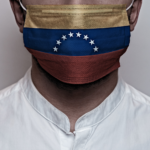It is becoming increasingly likely that government regulators will approve one or more vaccines for COVID-19 by the end of this year. Because manufacturing and distributing these vaccines will take many months, and initial supplies will be limited, this will only be the beginning of the end of the pandemic. These circumstances raise two ethical questions regarding vaccine allocation. First, which nations should get the vaccine first? Second, which populations of people within these individual nations should be vaccinated first? In this essay, I tackle the latter question first because it is easier for most people to imagine the challenge of allocating a vaccine within their own countries rather than among countries, before using the same ethical framework to answer the former question.
In the movie, Contagion, which was released in 2011, the newly developed vaccine against the fictitious virus MEV-1 was allocated to Americans via a random lottery by birth date. There are ethicists who have argued that some form of lottery is the only strategy that should be deployed in a pandemic because only a lottery can ensure that vaccine allocation is fair. However, this proposal assumes that the goal of a just vaccine allocation program is solely the fair distribution of the vaccine. In my view, this is incorrect. Rather, given a government’s mandate to preserve the common good, the goal of a national strategy for vaccine allocation should be to mitigate morbidity and mortality by ending the pandemic in the most efficient and rapid manner possible. This would better protect both the individual good of each citizen and the common good of the commonweal.
How then should we best allocate the COVID-19 vaccine to end the current pandemic? We have to consider two things. First there are geographic considerations. Not every region of a country is equally afflicted by COVID-19. Therefore, it should be reasonable to propose that the initial supply of vaccine should be allocated first to regions of a country with a higher viral burden, especially those regions with a higher population density, to stop the spread of the pandemic. Mathematical modeling can identify optimal geographic distribution strategies for a particular country to most efficiently halt the spread of COVID-19.
However, in all likelihood, this would mean that urban areas would be prioritized over rural ones. Though rural citizens may protest, if a large enough number of people in the cities were vaccinated to reach herd immunity—epidemiologists estimate that 50–60 percent of a population would have to be vaccinated to achieve this target for COVID-19—then the immunized city folk would break viral chains of transmission, effectively shielding their non-immunized neighbors in the countryside from contagion. This approach would therefore preserve the good of all.
Start your day with Public Discourse
Sign up and get our daily essays sent straight to your inbox.Second, there are demographic considerations. Here, contrary to those who advocate a random lottery for vaccine allocation, each individual should not be treated equally because each citizen is neither equally at risk for severe disease nor equally engaged in the fight against the pandemic. Rather, as St. Thomas Aquinas noted, “in distributive justice something is given to a private individual, in so far as what belongs to the whole is due to the part, and in a quantity that is proportionate to the importance of the position of that part in respect of the whole.” In the case of the pandemic, this would mean allocating the vaccine to each citizen in a way that best contributes to the well-being of the community.
Following the 2009 H1N1 pandemic, numerous countries throughout the world developed an allocation program for a pandemic influenza vaccine that segregated their citizen populations into different tiers of priority. Being placed into one of these tiers reflected a citizen’s heightened risk or heightened importance in the fight against the virus. I imagine that a similar strategy could be deployed during this COVID-19 pandemic.
The top tier of the allocation strategy with highest vaccination priority should include frontline health care workers, who are at high risk for contracting the virus, and public health officials, who play important roles in the fight against the pandemic. The second tier should include essential workers whose roles in society are not only inherently risky because of necessary interactions with the public but are also important for the common good. These would be our teachers, grocery story workers, public transportation workers, police, firefighters, and national security personnel, among others. The third tier should include vulnerable persons who are at risk for severe disease. For COVID-19, these would be older adults, and high-risk children and non-elderly adults with underlying conditions. Pregnant women often fall into this category, though a COVID-19 vaccine would first have to be approved to guarantee that it is safe for the unborn child. The fourth and lowest tier would include the general public. Vulnerable groups that are at more risk for severe disease for social and not medical reasons, especially the poor who live in densely populated areas without adequate healthcare, should get priority.
The actual implementation of this tiered strategy would depend upon evidence of the effectiveness of a specific vaccine for various populations in the community. For instance, one particular concern is that the elderly often do not mount a robust immune response upon vaccination. If senior citizens cannot be vaccinated against COVID-19, then the allocation strategy may have to be revised to prioritize vaccinating those around them to shield them from infection. In the end, the driving ethical principle here is that vaccines should be allocated to mitigate morbidity and mortality by ending the pandemic in the most efficient and rapid manner possible. This would better protect the common good of the nation.
Returning now to our first question of which countries should be receive the vaccine first, the same ethical principle should be used to shape global allocation of the vaccine: countries with raging epidemics should be prioritized over those with controlled ones. Those with have higher case fatality rates (CFRs) for COVID-19, often because of inadequate or overwhelmed healthcare systems, should be also prioritized over those with lower CFRs. Unfortunately, there are historical examples of “vaccine nationalism” that suggest that this will not happen. For example, during the 2009 H1N1 influenza pandemic, the United States and many European countries donated 10% of their vaccine stocks to poorer countries, only after it became clear they had enough for their own populations.
It would be a social tragedy and moral injustice if low-risk citizens in a rich country were to be vaccinated before high-risk health care workers in a poor one. In the same way that I have to seek my own good in light of the good of my family, and my family has to pursue its good in light of the good of the wider community, a rich country has to pursue its own good in light of the global good. Why? Because the good of the part is inextricably entangled in the good of the whole. If my family is struggling, I will not be able to truly flourish, and if my community is struggling, my family will not be able to truly flourish. Similarly, if the other countries of the world are struggling, a single nation, even if it is rich, will not be able to flourish, especially since national economics today have become linked in a global economy.
It is laudable therefore that the World Health Organization (WHO) and GAVI, a public–private global health partnership with the goal of increasing access to immunization in poor countries, have established the COVID-19 Vaccines Global Access Facility, a global risk-sharing mechanism for pooled procurement and equitable distribution of eventual COVID-19 vaccines. The Facility aims to procure vaccines to deliver them equally to all participating countries, proportional to their populations, with a target goal of immunizing 20 percent of each country’s population.
The principle of solidarity articulated by Catholic social teaching challenges all of us to recognize that all of us, regardless of our nationalities, are brothers and sisters in a common humanity who need to work together for our global common good. If anything, the current pandemic is a reminder that national boundaries are not physical barriers. As a world, we have suffered as one, and now we must heal as one.














